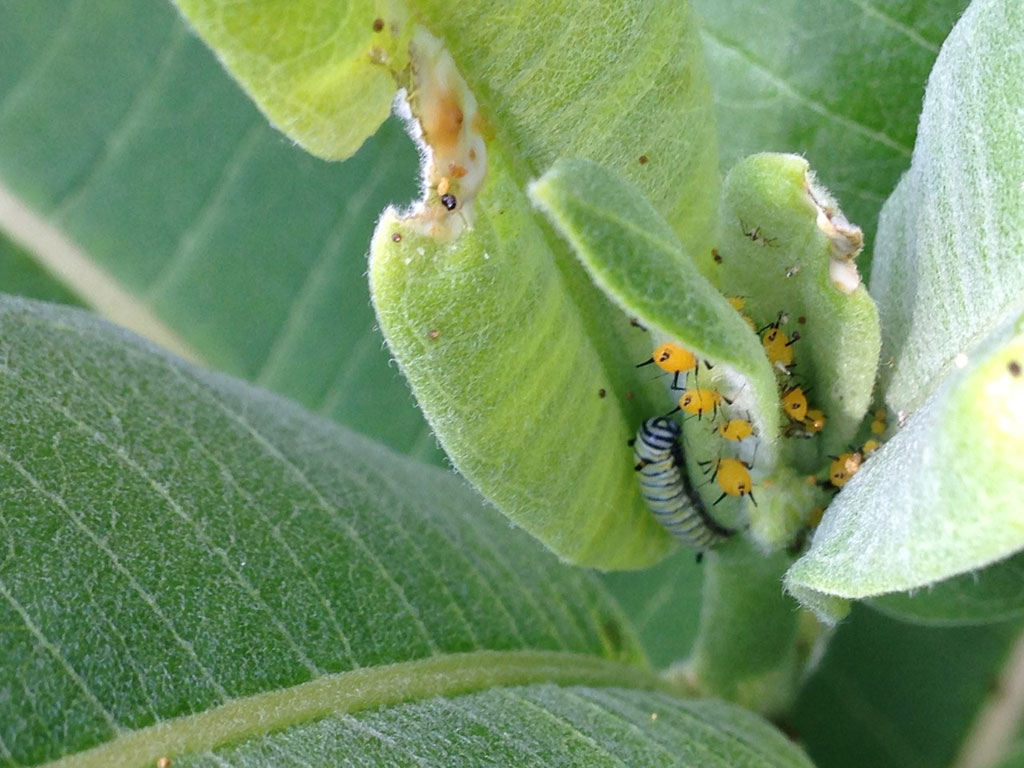 Monarch butterfly caterpillar and aphids, Fishers Island NY, August 2015
Monarch butterfly caterpillar and aphids, Fishers Island NY, August 2015
Scientific names: Danaus plexippus and Aphis nerri
Here’s a bit of hidden moth science, provided by entomologist Adam Mitchell, PhD:
Like animals, plants have an “immune system” and have a series of finely-tuned responses to specific stressors in their environment. When a leaf is chewed, signals are sent to the plant to create defenses that prevent further feeding. When, for example, a caterpillar chews on a leaf, the production of a hormone called jasmonic acid (JA) signals that kind of response. In contrast, when an insect feeds on the vascular (xylem-phloem) tissue of a plant, such as an aphid, a different signal is sent, and a different hormone is produced. This one is called salicylic acid (SA).
Generally, these different signals allow plants to focus specific defenses against specific threats. However, the production of one signal can sometimes prevent another. If a plant is already producing salicylic acid, it struggles to produce jasmonic acid. That is, if aphids are already feeding on a plant when a caterpillar begins to chew on the leaves, the plant cannot raise its defenses as effectively against the caterpillar as it usually would, because it’s already producing defenses to defend against the aphid.